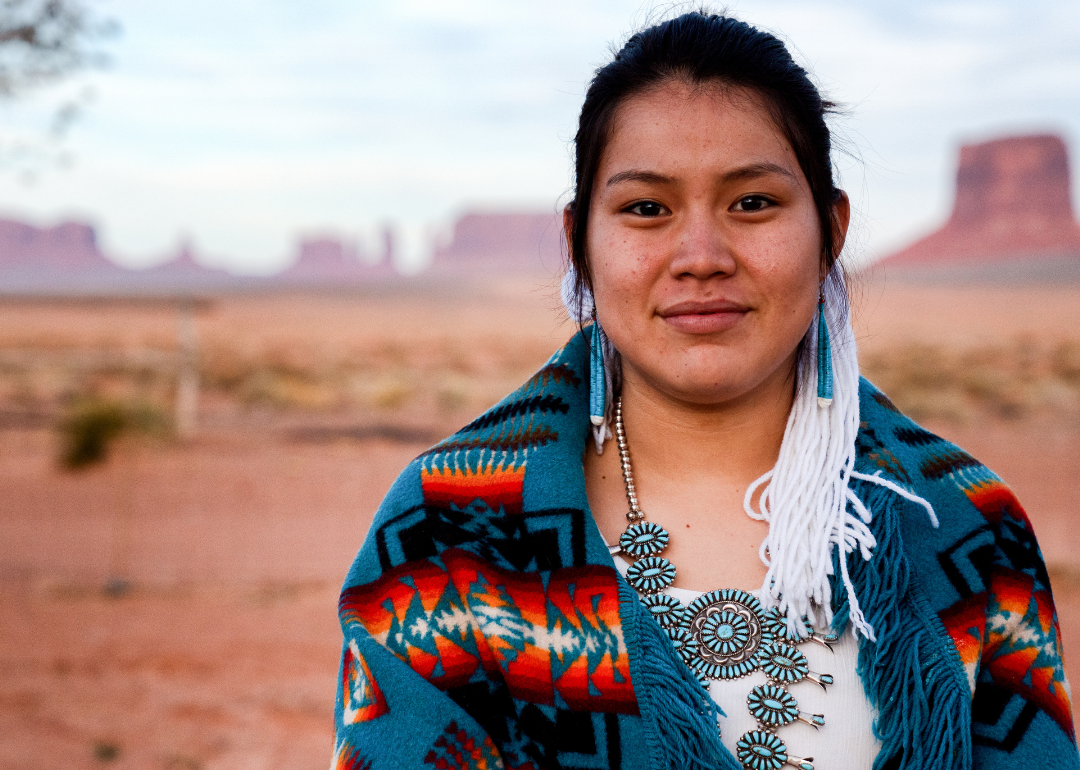
See the size of the Native American population in South Carolina
See the size of the Native American population in South Carolina
More than 5 million Native Americans live in the United States as members of 574 federally recognized and 63 state-recognized tribes. That number is projected to rise to 10 million by 2060. A federally recognized tribe is a sovereign entity with a government-to-government relationship with the United States, as well as the rights of self-governance in such areas as tribal law and taxation.
About half of Native Americans live on reservations, of which there are about 326, comprising roughly 56.2 million acres. The 16 million-acre Navajo Nation Reservation in Arizona, New Mexico, and Utah is the largest, and the 1.32-acre Pit River Tribe cemetery in California is the smallest.
Stacker ranked the states with the biggest Native American populations and looked at some of the characteristics and conditions for each community, analyzing data from the U.S. Census Bureau's 2019 American Community Survey one-year estimate. The U.S. Census Bureau's definition of "Native Americans" includes Alaskan Natives but excludes Native Hawaiians.
Keep reading to find out the size of the Native American population in your state, or see the national list here.
South Carolina by the numbers
- Native American population: 18,971
- Proportion of state's population: 0.4% (#35 highest among all states)
More than a half-dozen tribes have state recognition in South Carolina, among them the Beaver Creek, Edisto Natchez Kusso, Pee Dee, and Waccamaw. The sole federally recognized tribe, the Catawba, has a reservation near Rock Hill. In 2020, the federal government approved the Catawba's use of 16 acres across the border in North Carolina, where the tribe plans to build an entertainment and casino complex. The plan is opposed by the Eastern Band of Cherokee, which operates two casinos in the western part of North Carolina and say investments and jobs would be threatened by the competition.
Compared with other U.S. races, American Indians have a life expectancy that is shorter by more than five years. The suicide rate among American Indian youth is 2.5 times higher than among youth in the rest of the country. American Indians are 2.5 times more likely to experience violent crimes than the national average, and more than four out of five American Indian women will experience violence in their lifetimes. Holistically, these issues can be seen as symptoms of several larger issues, including access to social services, educational opportunities, nutritional food, and health care. Property rights pose more significant problems, insomuch as residents who don't have deeds to the land on which they live struggle to build credit, which throws a significant barrier in front of upward mobility. Meanwhile, tribal lands are tough sells for franchises and other commercial developers that would bring jobs to reservations, as these companies are often resistant to negotiating contract terms under tribal law.
One effort to mitigate the aforementioned statistics came with the 1968 establishment of the American Indian Movement (AIM) in Minnesota, which advocated for sovereignty and rights. The group famously occupied the Wounded Knee battle site at the Pine Ridge Reservation for more than two months in 1973.
Rep. Deb Haaland, a member of the Laguna Pueblo in New Mexico, has since been tapped to head the U.S. Department of Interior for President Joe Biden's administration, becoming the first Indigenous cabinet secretary in the nation. Among her responsibilities will be the underfunded Bureau of Indian Education and the Bureau of Indian Affairs, the latter of which oversees 55 million acres of tribal land.
Read on to see the states with the biggest and smallest Native American populations.
States with the biggest Native American populations
#1. Arizona: 332,273 Native American individuals
#2. California: 321,112 Native American individuals
#3. Oklahoma: 316,929 Native American individuals
States with the smallest Native American populations
#1. New Hampshire: 1,727 Native American individuals
#2. Washington, D.C.: 1,886 Native American individuals
#3. Vermont: 2,928 Native American individuals



